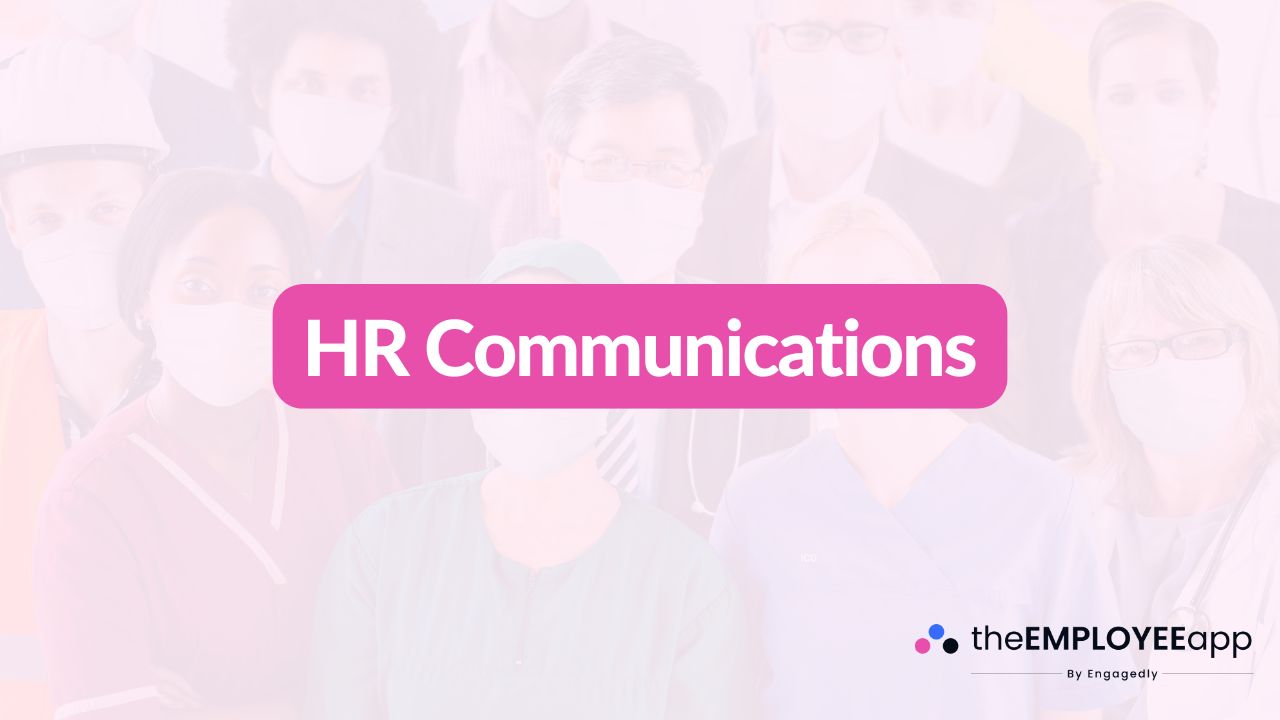
HR communications refers to the way Human Resources departments share information, policies, and updates with employees. It encompasses all the channels and methods used to deliver messages about workplace culture, benefits, compliance, career opportunities, and employee support. Effective HR communication ensures that employees not only receive information but also understand and act on it.
HR communications cover a wide range of internal messages. These may include announcements about policy changes, updates on employee benefits, reminders about compliance training, performance management guidelines, or even broader cultural initiatives like diversity and inclusion efforts. The goal is to keep employees informed, aligned, and engaged.
It is not limited to top-down messaging. Modern HR communications also encourage two-way dialogue, where employees can share feedback, ask questions, and voice concerns. This builds trust and creates a culture of transparency.
Organizations often underestimate the power of communication in driving employee engagement. Clear and consistent HR communications help:
Improve Employee Understanding: Workers know where to find policies, benefits, and resources.
Boost Engagement: Employees feel connected to company values and goals.
Reduce Compliance Risks: Clear communication ensures adherence to laws and regulations.
Support Culture Building: HR messaging reinforces workplace values, inclusion, and wellbeing.
Increase Retention: Transparent communication fosters trust, reducing turnover.
For frontline employees, HR communications are even more critical. These workers may not sit at desks or check emails regularly, so companies must use mobile apps, kiosks, or other digital solutions to ensure HR messages reach everyone.
HR communications can take many forms depending on the organization’s needs. Some key examples include:
Policy Updates and Compliance
Messages about workplace safety, labor laws, and required training.
Benefits and Compensation
Explaining healthcare, retirement plans, wellness programs, and pay updates.
Recruitment and Onboarding
Guiding new hires through orientation, culture, and job responsibilities.
Employee Development
Sharing resources for training, career advancement, and performance reviews.
Culture and Engagement
Communicating values, diversity initiatives, recognition programs, and employee feedback opportunities.
Improving HR communications requires a strategic approach. Organizations should consider these best practices:
Use Clear, Simple Language: Avoid jargon so that every employee can easily understand messages.
Choose the Right Channel: Email may work for desk workers, but mobile apps, text alerts, or kiosks are better for frontline teams.
Be Consistent: Establish a regular rhythm for communications, such as monthly HR newsletters or weekly updates.
Encourage Feedback: Two-way communication builds trust and ensures employees feel heard.
Segment Your Audience: Tailor messages to different groups—frontline, corporate, leadership—so communication feels relevant.
Leverage Technology: Employee communication platforms and mobile apps can centralize HR messaging in one accessible place.
Despite its importance, many organizations struggle with HR communications. Common challenges include:
Information Overload: Employees receive too many messages, making it difficult to prioritize HR updates.
Lack of Reach: Frontline employees may not have easy access to email or intranet.
Inconsistent Messaging: Different managers may deliver information differently, leading to confusion.
Low Engagement: Employees may ignore HR messages if they feel irrelevant or repetitive.
Addressing these challenges requires leadership commitment and the right tools to streamline communication.
As workplaces become more distributed and hybrid, HR communications will continue to evolve. Organizations are investing in mobile-first communication strategies, AI-driven chatbots for HR FAQs, and personalized messaging that ensures employees receive information that is relevant to them.
In the future, HR communications will focus even more on accessibility, personalization, and inclusivity—ensuring that every employee, regardless of role or location, has access to the same information and opportunities.
HR communications form the backbone of organizational culture and employee engagement. When done well, they ensure employees feel informed, valued, and connected to their organization’s mission. For HR leaders, mastering communication is no longer optional—it is essential for building trust, improving performance, and creating a thriving workplace. Companies that prioritize clear, accessible, and engaging HR communications will stand out as employers of choice in today’s competitive talent landscape.
